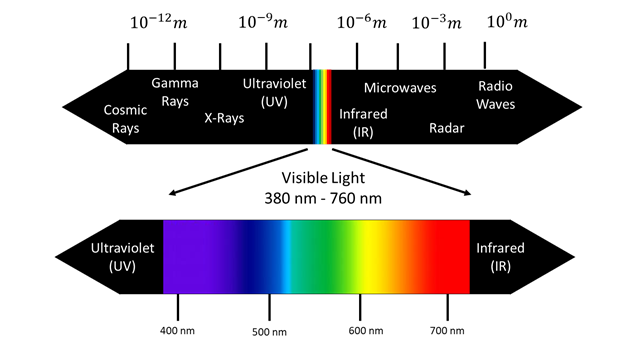1 The EM Spectrum
Aaron Lee
When we describe light in common terms, most often we are talking about Visible Light, which our eyes can naturally see. This, however, represents a very narrow portion of what we call the Electromagnetic Spectrum or EM Spectrum.
When we use the term wavelength, we are describing how a passing photon oscillates through an electric field as it moves through space. The EM Spectrum represents all energy levels that photons can possess. The higher the energy, the shorter the wavelength.
The wavelengths of visible light range from approximately 380 nanometers to 760 nanometers. Both the sun and artificial electric lamps can emit shorter and longer waves than visible light.

Starting from the highest energy photons which are emitted as Cosmic Rays and which have a wavelength a million times smaller than what we can see, then moving down the line we have Gamma Rays and X-Rays, which are used to photograph bones inside living tissue.
Just beyond visible light is the UV or ultraviolet portion of the spectrum. It is called this because “ultra” means beyond and in this case it is beyond the colour violet in the visible portion of the spectrum. This is the part of sunshine that gives you a bad sunburn and consists of a wide range of wavelengths.
Below the threshold of visible light we have infrared, or IR, radiation. It is sometimes referred to as heat radiation because this is the electromagnetic radiation emitted by all objects. The warmer something is, the further up on the IR scale it gets. Sometimes things get so hot they become Incandescent and start emitting EM radiation in the visible portion of the spectrum. This is the principle under which incandescent lamps operate.
Further down the scale we have microwaves, which are used to heat our food, and radio waves, which we use for long-distance communication
